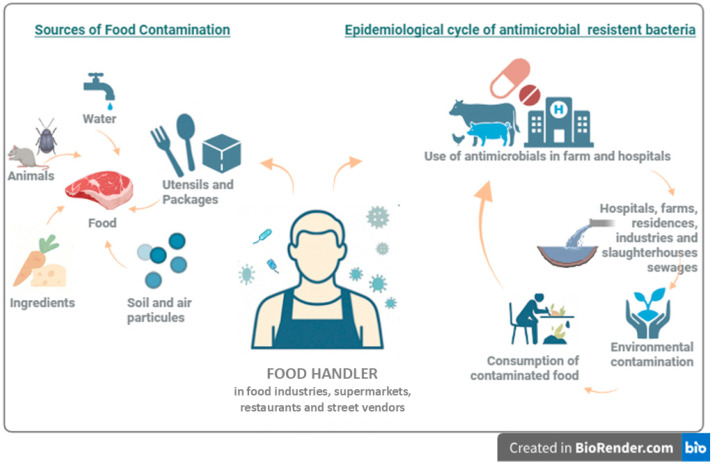Figure 1.
The image illustrates the role of the food handlers within two distinct yet interconnected cycles. On the left, the food handler is depicted as a potential source of food contamination, alongside other contributors such as animals, raw ingredients, water, airborne and soil particles, utensils, and packaging materials. On the right, the diagram highlights the food handler’s involvement in the epidemiological cycle of antimicrobial-resistant bacteria dissemination. This cycle encompasses several interacting factors, including the use of antimicrobials in agricultural and healthcare settings, which contributes to the production of contaminated sewage originating from hospitals, slaughterhouses, households, and industrial facilities. Such waste leads to environmental contamination—affecting water sources, soil, animals and crops—which may, in turn, result in the consumption of contaminated food products. Critically, the food handler plays an active role in this dynamic when working in restaurants, street food stalls, or similar environments, where improper handling practices may lead to the contamination of various types of food. When such foods are consumed raw or are insufficiently cooked, the contamination can reach the consumer directly, thereby contributing to the transmission of pathogenic and antimicrobial-resistant bacteria.

